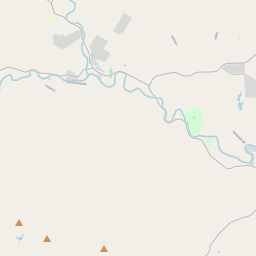Mormon Settlers in Bandera County
Historical marker location:






Entered the year-old town of Bandera in March, 1854. Leader was Lyman Wight, church elder who had separated from followers of Brigham Young and taken a colony of 250 to Texas in 1846. Settling first in Austin, then Fredericksburg (where they opened grist and saw mills) the group at last established "Mormon Camp" near Bandera on the Medina River. There they built houses with vegetable gardens in between; milled grain; made furniture from native wood to sell in East. In 1858, after Wight's death, the colony dispersed, although a remnant remained in Bandera. (1967)
As one of the most visible programs of the Texas Historical Commission (THC), historical markers commemorate diverse topics in Texas history, including: the history and architecture of houses, commercial and public buildings, religious congregations, and military sites; events that changed the course of local and state history; and individuals who have made lasting contributions to the state, community organizations, and businesses.
The state of Texas was once an independent country known as the Republic of Texas. It gained independence from Mexico in 1836 and was a separate nation until it was annexed by the United States in 1845.
The first recorded settlement in Bandera County was established in 1852 by John James and Charles DeMontel. The town of Bandera was soon founded, and in 1856, Bandera County was officially created. The county was named after the nearby Bandera Pass, a mountain pass that was used by early Spanish explorers as a trail marker.
During the 19th century, Bandera County became an important center for ranching and agriculture. The fertile land and abundant water sources made it an ideal location for raising cattle and farming. The region quickly developed a reputation for its strong cowboy and ranching culture.
In the early 20th century, the discovery of oil in nearby counties brought economic prosperity to Bandera County. Numerous oil wells were drilled, and the area experienced a boom in population and development. Despite the decline of the oil industry in later years, Bandera County continues to thrive as a popular tourist destination, known for its historic downtown, natural beauty, and western heritage.
Today, Bandera County remains a charming rural community that celebrates its rich history and maintains its Western traditions. Visitors can explore the numerous historic sites, museums, and cowboy-themed events, immersing themselves in the county's unique culture and heritage.
Bandera County Timeline
This timeline provides a condensed summary of the historical journey of Bandera County, Texas.
- 1856 - Bandera County is created from parts of Bexar, Uvalde, Medina, and Kerr counties.
- Late 1850s - Settlers begin to establish homesteads and ranches in the area.
- 1870 - The first courthouse is built in Bandera, the county seat.
- Late 1870s - The population booms due to the expansion of the cattle industry.
- 1891 - The Bandera County Courier newspaper is founded.
- 1933 - The Bandera Electric Cooperative is formed to bring electricity to rural areas.
- 1940s - Ranching and farming become the primary economic activities in the county.
- 1975 - Bandera becomes the "Cowboy Capital of the World" and hosts the first Cowboy Capital Rodeo.
- 2002 - The Bandera County Library is opened.